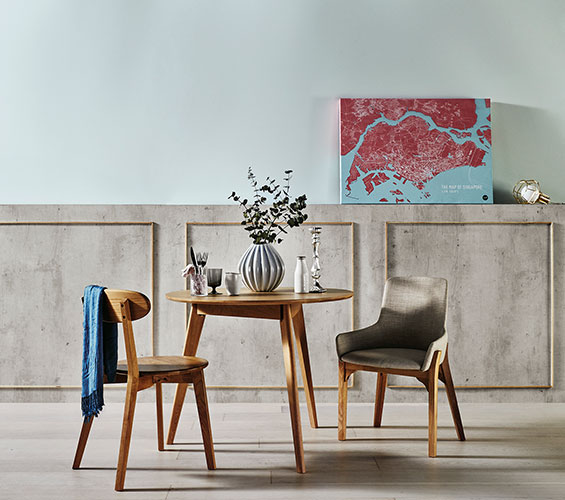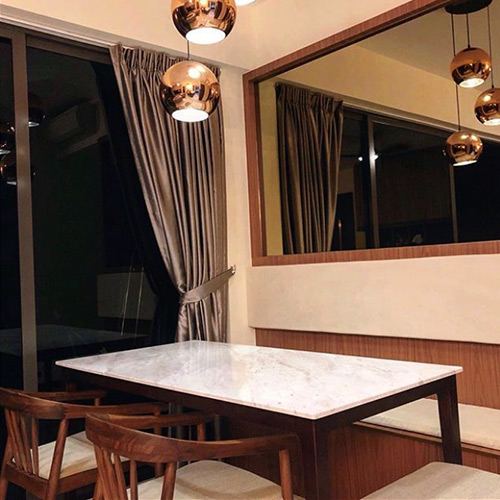Artisanal Dining Chairs in Singapore: Master Craftsmen and Their Timeless Creations
In the heart of Singapore's vibrant design landscape, a quiet revolution is taking place. Local furniture artisans are reclaiming their place in a market once dominated by mass-produced imports, creating dining chairs that are as much works of art as they are functional pieces. These skilled craftspeople combine traditional techniques with contemporary aesthetics, producing pieces that tell stories of Singapore's rich cultural heritage while meeting modern needs for quality and sustainability.
The resurgence of artisanal dining chairs represents more than just a design trend—it's a movement toward mindful consumption, where homeowners increasingly value the human touch behind their furniture. In Singapore's compact living spaces, dining chairs often serve as focal points in multi-functional areas, making their design impact particularly significant. By choosing locally crafted pieces, Singaporeans are not only enhancing their homes but also preserving craftsmanship traditions that might otherwise fade in our digital age.
The Value of Local Craftsmanship
Supporting local furniture artisans creates a ripple effect throughout Singapore's economy. When you purchase a dining chair from a local craftsperson, approximately 80% of that expenditure remains within the community, compared to just 40% when buying from large international retailers. This economic impact extends beyond the artisans themselves to suppliers of raw materials, finishing specialists, and small business service providers.
Beyond economics, locally crafted dining chairs offer superior quality assurance. Singapore's artisans typically use construction methods like mortise and tenon joints or dovetail connections that far outlast the dowel and glue approaches of mass-produced furniture. This attention to detail results in chairs that maintain their structural integrity for decades rather than years.
Perhaps most compelling is how local craftspeople infuse their work with distinctly Singaporean elements. From Peranakan-inspired carved backrests to contemporary interpretations of colonial-era rattan work, these pieces carry cultural significance that imported furniture simply cannot match. Each chair becomes not just a place to sit, but a conversation piece that connects homeowners to Singapore's rich design heritage.
Distinctive Features of Artisanal Dining Chairs
What sets locally crafted dining chairs apart begins with material selection. Singapore's artisans frequently work with premium hardwoods like Nyatoh, Teak, and Chengal—species well-adapted to the tropical climate that resist warping in Singapore's humidity. Many incorporate locally sourced materials, from rattan harvested in Southeast Asia to marble quarried in the region.
The handcrafting process itself distinguishes these pieces. Unlike factory production where each component passes through multiple machines, artisanal chairs are often crafted by a single maker or small team who oversee the entire process. This holistic approach allows for quality control at every stage and results in chairs with perfect proportions and exceptional comfort.
Design elements in artisanal dining chairs often feature intricate details impossible to replicate in mass production. Hand-carved floral motifs, precisely hand-woven seats, and custom joinery showcase the maker's skill. Many Singaporean artisans offer customization options, allowing clients to adjust seat height, back angle, and other elements for perfect ergonomics—particularly valuable in a population with diverse physical needs.
Sustainability practices have become central to local furniture production. Singapore's craftspeople often use timber from responsibly managed forests, employ natural finishes like beeswax or linseed oil, and design chairs for disassembly and repair—extending their lifespan significantly. This approach contrasts sharply with disposable furniture culture and resonates with environmentally conscious consumers.
Traditional vs. Modern Craftsmanship
Singapore's furniture artisans walk a fascinating line between heritage techniques and contemporary innovation. Many have mastered traditional methods like hand-planing, which creates surfaces with subtle variations that catch light differently than machine-finished wood. These time-tested approaches result in chairs with character that develops patina over decades of use.
Yet these same craftspeople embrace modern innovations where appropriate. Laser-cutting technology enables precise inlay work, while advanced, low-VOC finishes provide durability with minimal environmental impact. This blend of old and new represents Singapore's broader cultural approach—honoring tradition while embracing progress.
Some local artisans have developed signature methods that distinguish their work. The studio Everyday Canoe applies boat-building techniques to create dining chairs with exceptional strength-to-weight ratios. Others, like Jotterwood, have revived the Japanese Shou Sugi Ban wood charring technique, creating dramatic black finishes that are naturally insect-resistant—perfect for Singapore's tropical climate.
Spotlight on Local Furniture Makers
Singapore boasts a growing community of furniture artisans creating exceptional dining chairs. Etch&Bolts has gained recognition for collaborating with local designers on limited-edition dining chair collections that showcase Singaporean design sensibilities. Their "Merlion Series" reinterprets the national icon through subtle design elements like wave-inspired backrests and lion-claw leg details.
SMOKE design studio specializes in handcrafted custom furniture with a distinctly contemporary aesthetic. Their dining chairs often feature unexpected material combinations—pairing locally sourced hardwoods with rattan, leather, or brass accents. Each piece is signed and numbered, emphasizing its status as both functional furniture and collectible art.
Other notable artisans include Roger&Sons, whose "Local Tree Project" transforms salvaged Singapore timber into dining chairs that preserve the stories of the city's changing landscape. Meanwhile, Scanteak offers a more accessible entry point to artisanal furniture, producing dining chairs that combine handcrafted elements with more efficient production methods, making quality craftsmanship available at moderate price points.
Choosing the Right Artisanal Dining Chair
Selecting artisanal dining chairs requires consideration of both aesthetic and practical factors. Design harmony is essential—chairs should complement your dining table in both style and proportion. Many Singaporean homes benefit from chairs with clean lines and compact footprints that maximize space efficiency without sacrificing comfort.
Material selection should reflect your lifestyle. Families with young children might prefer chairs crafted from durable hardwoods with washable seat cushions, while design enthusiasts might prioritize the unique grain patterns of specialty woods. Consider how materials will age in Singapore's climate—some woods darken beautifully over time, while others maintain their original appearance.
The customization options offered by local artisans represent a significant advantage. Beyond aesthetic choices like wood species and finish, ergonomic customization ensures dining comfort for all family members. Some craftspeople even offer "growth-adjustable" children's dining chairs that adapt as young family members develop—an investment in both comfort and sustainability.
The Investment Value of Artisanal Furniture
While artisanal dining chairs typically command higher prices than mass-produced alternatives, they represent superior long-term value. The construction quality of locally crafted chairs often results in lifespans measured in generations rather than years. Many artisans offer lifetime structural guarantees—a testament to their confidence in their work.
Beyond durability, artisanal chairs possess timeless appeal that transcends trends. Their clean lines and thoughtful proportions remain relevant as interior styles evolve around them. Many owners report that their artisanal dining chairs become more beautiful with age as woods develop rich patinas from use.
Perhaps most surprisingly, quality artisanal furniture often maintains or increases in value over time. Chairs from established Singapore craftspeople have developed secondary market demand, with vintage pieces sometimes selling for more than their original purchase price. This resale potential transforms furniture from a depreciating expense into a potential investment.
A Legacy at Your Table: The Future of Singapore's Furniture Craftsmanship
The choice to invest in artisanal dining chairs extends beyond personal benefit—it helps preserve Singapore's craft heritage for future generations. Each purchase supports not only current artisans but also the apprenticeship systems through which they train the next generation of furniture makers. Organizations like the Singapore Furniture Industries Council have developed programs connecting veteran craftspeople with young designers, ensuring traditional skills evolve rather than disappear.
As Singapore continues developing as a design hub, locally crafted furniture increasingly represents the nation's creative identity internationally. By choosing artisanal dining chairs, you participate in this cultural expression while surrounding yourself with beauty that carries meaning beyond mere function.
The next time you gather around your dining table—for family meals, friendly gatherings, or quiet moments alone—consider the chairs that support these experiences. In a world increasingly dominated by disposable goods, artisanal dining chairs offer an alternative: objects made with intention, designed for permanence, and connected to the community around you. In supporting Singapore's furniture artisans, you bring not just chairs but stories to your table.



